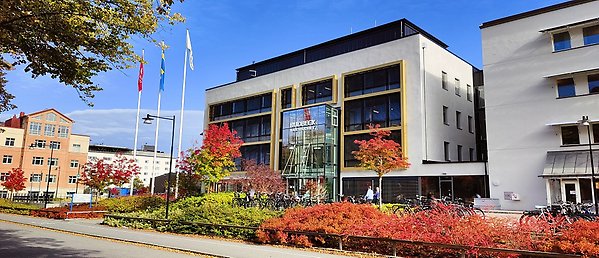[Big Talks] – Transposon Genomics — From Single Loci To Single Cells
October 21 @ 14:30 – 15:15 CEST
Invited speaker
Molly Gale Hammell, Associate Professor, Cold Spring Harbor Laboratory, USA
Abstract
Transposable Elements (TEs) are sequences in the human genome that have (or once had) the ability to mobilize from one location in the genome to another. Most of the TEs that currently exist in the human genome are fixed and unable to mobilize, but many of these sequences have some residual level of functionality. These residual functions might include: the ability to bind DNA- or RNA-binding factors and act as regulatory elements, the ability to generate RNA transcripts, and/or the ability to encode proteins. Because TEs are extremely abundant in the human genome, covering nearly 45% of the sequence space, active TEs can have a large, and often deleterious, impact on host cell function. Multiple studies have shown aberrant elevation of TE expression in aging-associated diseases, such as neurodegeneration and cancer. However, establishing a causal role for TE activity in these contexts requires tracking down the individual TE loci that are active, and distinguishing these from the thousands of other TE loci that are silent and/or non-functional. This is still an unsolved problem in the field of transposon genomics, but new tools and technologies are making the problem more tractable. These include long-read technologies, and improved statistical methods for analyzing TE expression and integrating TE multi-omics datasets. Once aberrantly active TE loci are identified, it’s often important to know which cell type is harboring these activated TEs, and whether certain cells are more vulnerable to TE activity than others. Integrating TE expression analysis into single-cell genomics workflows is crucial to understanding how these elements contribute to human disease. I will present recent results from my lab that tackle these issues in the context of neurodegeneration, where elevated transposons are thought to contribute to neurotoxicity, and may also contribute to neuroinflammation.
Biography

The Gale Hammell lab uses a combination of computational and experimental methods to understand how gene regulatory networks are perturbed in human disease. This includes an emphasis on developing novel tools for the statistical analysis of high-throughput data, developing novel algorithms for modeling the flow of signals through genetic pathways, and importantly, testing these models using the tools of molecular genetics. One particular focus of the M. Hammell lab is to apply these novel statistical analysis methods to better understand how transposable elements are normally controlled. Mounting evidence has implicated transposon activity in a host of human diseases, with particular evidence for activation in several neurodegenerative diseases, including Amyotrophic lateral sclerosis (ALS), Fronto-Temporal Dementia (FTD), and Alzheimer’s Disease (AD). By combining the power of systems-level, high-throughput data analysis with patient-derived ALS, FTD, and AD tissue samples, the lab aims to better understand how these viral-like sequences contribute to cell death and disease.
Host: Louella Vasquez, NBIS Lund (louella.vasquez@scilifelab.se)
Date: October 21, 14:30 – 15:15 CET online on YouTube
Broadcast link (live event): SBW YouTube channel
The talk will also be available afterwards on the SciLifeLab YouTube channel.
More information about the Swedish Bioinformatics Workshop here.

